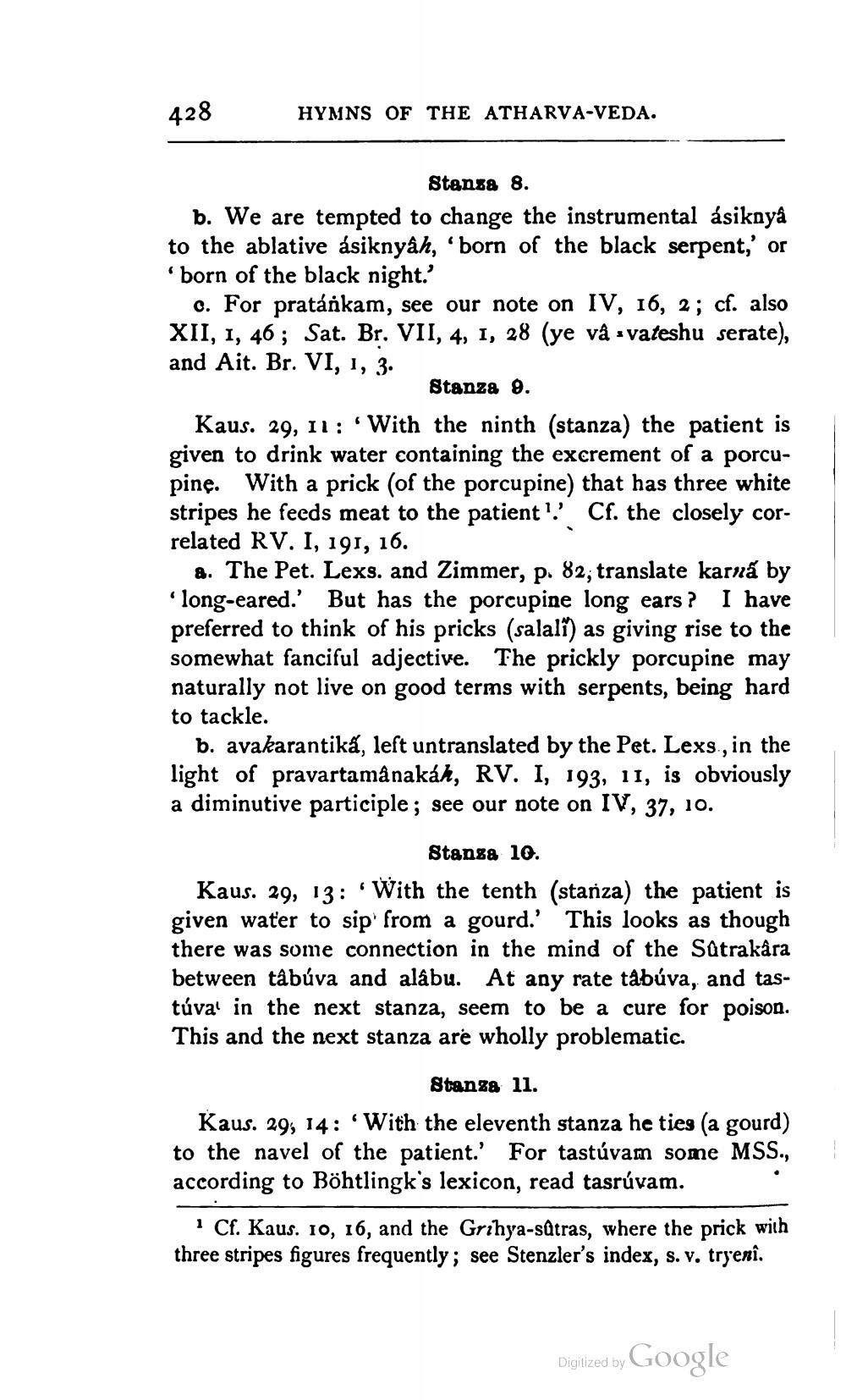________________
428
HYMNS OF THE ATHARVA-VEDA.
Stansa 8. b. We are tempted to change the instrumental ásiknya to the ablative ásiknyah, 'born of the black serpent,' or born of the black night.'
c. For pratánkam, see our note on IV, 16, 2; cf. also XII, 1, 46 ; Sat. Br. VII, 4, 1, 28 (ye vâ - vateshu serate), and Ait. Br. VI, 1, 3.
Stanza 9. Kaus. 29, 11: With the ninth (stanza) the patient is given to drink water containing the excrement of a porcupinę. With a prick (of the porcupine) that has three white stripes he feeds meat to the patient?' Cf. the closely correlated RV. I, 191, 16.
a. The Pet. Lexs. and Zimmer, p. 82; translate karná by long-eared.' But has the porcupine long ears? I have preferred to think of his pricks (salalî) as giving rise to the somewhat fanciful adjective. The prickly porcupine may naturally not live on good terms with serpents, being hard to tackle.
b. avakarantikā, left untranslated by the Pet. Lexs., in the light of pravartamânakáh, RV. I, 193, 11, is obviously a diminutive participle; see our note on IV, 37, 10.
Stanga 10. Kaus. 29, 13: With the tenth (stanza) the patient is given water to sip' from a gourd.' This looks as though there was some connection in the mind of the Satrakara between tâbúva and alâbu. At any rate tabúva, and tastúval in the next stanza, seem to be a cure for poison. This and the next stanza are wholly problematic.
Stanza 11. Kaus. 29; 14: With the eleventh stanza he ties (a gourd) to the navel of the patient.' For tastúvam some MSS., according to Böhtlingk's lexicon, read tasrúvam.
Cf. Kaus. 10, 16, and the Grihya-sâtras, where the prick with three stripes figures frequently; see Stenzler's index, s. v. tryenî.
Digized by Google




